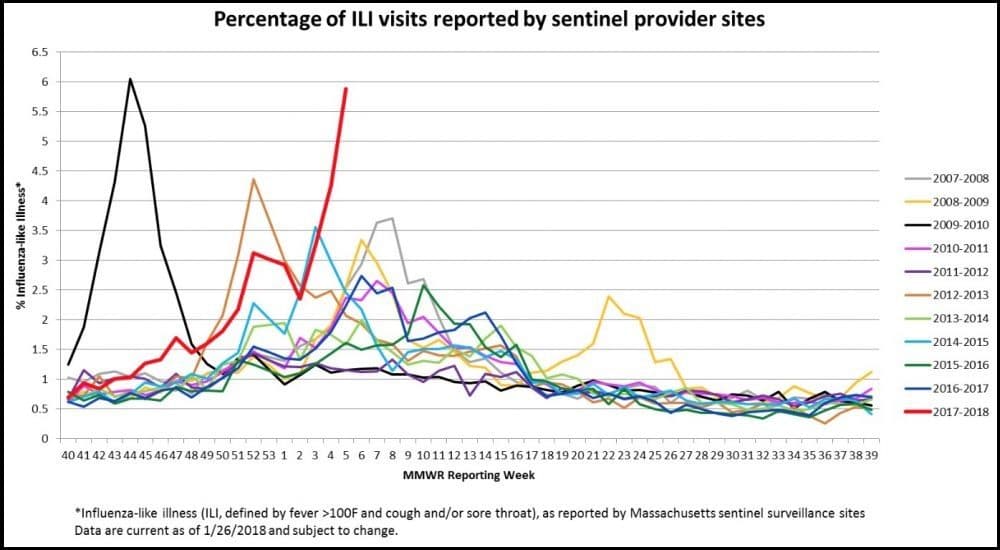Advertisement
How The Flu Kills: Top Warning Signs As Season Rages On
Resume
Officials have just confirmed the first death of a Massachusetts child from flu-related complications: a 6-year-old girl in Haverhill. They are continuing to track what's clearly the worst flu season in years.
Health officials always say that every flu season is bad, and it is. Many thousands of adults and dozens of children die nationwide every year. But now, we're starting to see indications that this is the most intense season in recent recorded history.
At Massachusetts General Hospital, "We are seeing record-breaking numbers of flu cases," said Dr. Paul Biddinger, vice chairman for emergency preparedness. "In the previous week, we actually saw the highest number of cases we have ever seen in a single day: 45 new cases. And we had a previous record that was broken last week as well, in terms of numbers of cases."
Mass. General alone has already reported 12 adult deaths from flu this season. The state does not have an adult death count for this year, but we do know that the number of adults who die statewide every year ranges from 250 to over 1,100.
So how does the flu kill?
Dr. Erica Shenoy, an infectious disease specialist and associate chief of infection control at Mass. General, pointed to a couple of main ways:
• Older people can sometimes succumb to the virus itself, or to secondary bacterial infections, most often pneumonia.
• Rarely, in young people, their body mounts such a powerful immune defense that the immune response itself can lead to complications. That's called a "cytokine storm," and it's inflammation gone haywire that can lead to sepsis and organ failure.
Children face particular danger of dehydration, Dr. Shenoy noted. "If they're having a version of the flu that has more of the vomiting and diarrhea, which is less common in adults, they can get dehydrated very quickly, and then have complications follow from that," she said.
So parents particularly need to watch for dehydration, and also for a particular pattern: when the patient seems to get better, then takes a turn for the worse.
If the flu "kind of goes away and then comes back," Dr. Shenoy said, if the patient "had a period of feeling well and now they suddenly feel worse," that's a time to be extra-observant and seek medical attention. "They may be getting a pneumonia, a bacterial pneumonia, after having kind of gotten through the flu," she said.
Dr. Biddinger distills all this down into three major warning signs: breathing, drinking and thinking.
"If you're having trouble breathing, if you're not able to keep any liquids down, if you start feeling confused or you're just so incredibly lethargic that you can't even get out of bed — then maybe it's time to come to the emergency department."
He also points out that though the flu vaccine is not perfect, it does decrease the likelihood that you'll get very sick or die.
This segment aired on February 14, 2018.
